























10 steps to successful family mealtimes
Mealtimes are a great opportunity for the family to come together to share food and enjoy each other’s company. In addition, family mealtimes have benefits beyond happy shared experiences—eating together with family members can teach your toddler healthy eating habits that may last a lifetime.

It’s the little things that can make a big difference when it comes to what your toddler eats and drinks. Check you’re following these tips and ask yourself if they’re true at family meals in your home today
If you are already following all of the advice, congratulations, you are giving your toddler the best
chance of becoming a healthy independent eater. If not, don’t worry. Take note of what is missing from
your family mealtimes and try to make small changes now that will have a lasting impact on your toddler’s eating habits.
- Make sure TVs and screens are turned off and removed from the table to avoid distracting your little one.

-
Create a warm, pleasant, and friendly atmosphere with plenty of interaction.

-
Sit down as a family to enjoy your evening meal together most nights of the week.

-
Trust your toddler’s fullness cues and let her decide when she’s had enough. Her appetite may vary from day to day but she’s generally hungry at mealtimes.

-
Enjoy a variety of meals and trying new foods together. If your toddler is reluctant to try unfamiliar foods, see How to help your baby learn to like new foods and textures for some helpful tips.
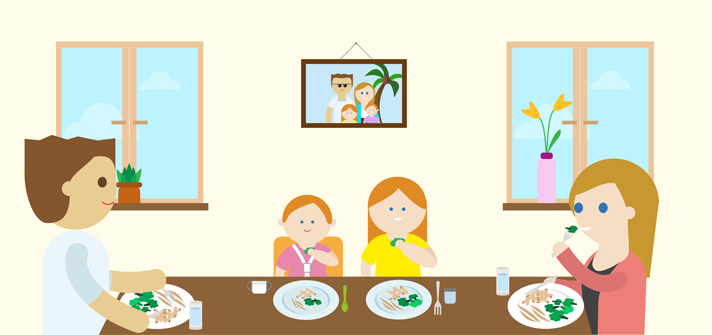
-
Be good role models for your toddler by eating the same healthy food you offer her and
showing her you like your food. (Don’t make a face or say something tastes bad.)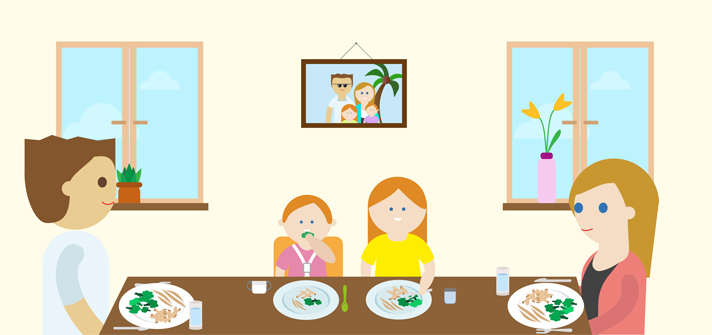
-
Offer your toddler three main meals a day, at regular times.

-
Offer your toddler one to two snacks each day. Toddlers need to be offered food frequently; she doesn’t need to eat constantly. Leave time between meals and snacks to give her a chance to feel hungry.
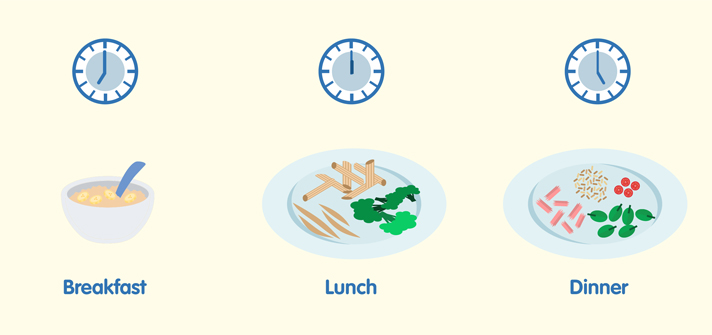
-
Offer your toddler drinks (milk or water) with meals and when eating in between these times.
Don’t offer her sugar-sweetened beverages.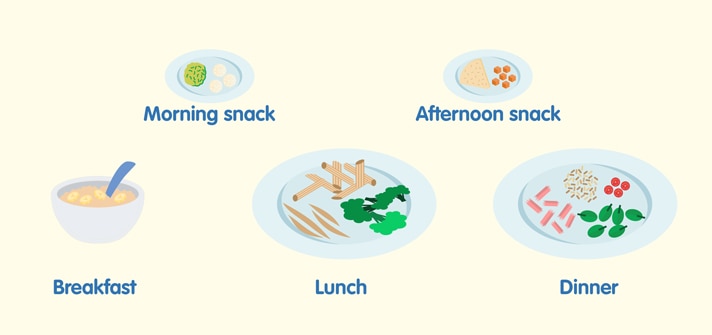
-
On a typical day, offer your toddler foods from all the food groups: fruits, grains, dairy, meat/fish/protein foods, and vegetables.
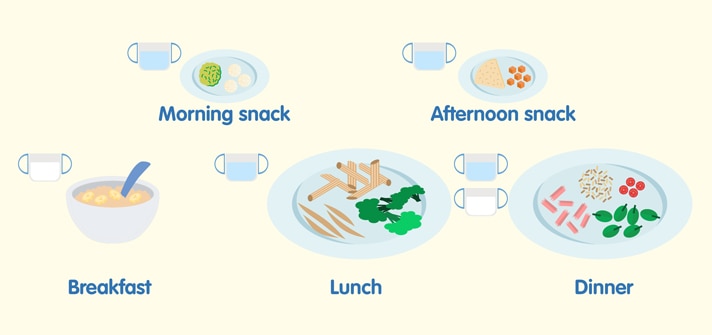
Try to follow these steps as often as you can. By sitting down to meals together as a family and role modelling healthy-eating habits, your toddler will benefit now and into the future.
Sources
- Black RE, Makrides M, Ong KK (eds): Complementary Feeding: Building the Foundations for a Healthy Life. 2017 Nestlé Nutr Inst Workshop Ser, vol 87, pp 153–165, (DOI: 10.1159/000448965)
- Dattilo AM Programming long-term health: Effect of parent feeding approaches on long-term diet and eating patterns. In: Early nutrition and long-term health, mechanisms, consequences and opportunities. Ed., Saavedra and Dattilo, Elsevier, 2017: 471-95.
- Shelov SP & Altmann TR (Eds.). (2009). American Academy of Pediatrics. The complete and authoritative guide Caring for your baby and young child birth to age 5 (5th ed.). USA: Bantam Books.Last revised: June, 2018